Back
Usage of the NxCore Memory Address Scan Utility
1) Scanning available memory addresses by the size increment specified:
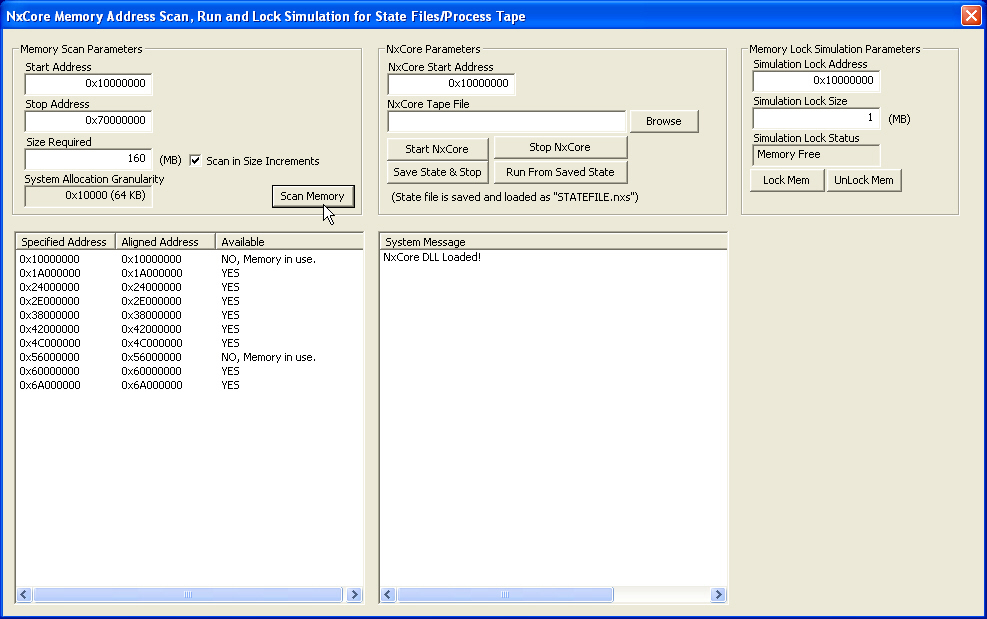 |
2) Scanning available memory addresses by the allocation granularity (Scan
in Size Increments is unchecked):
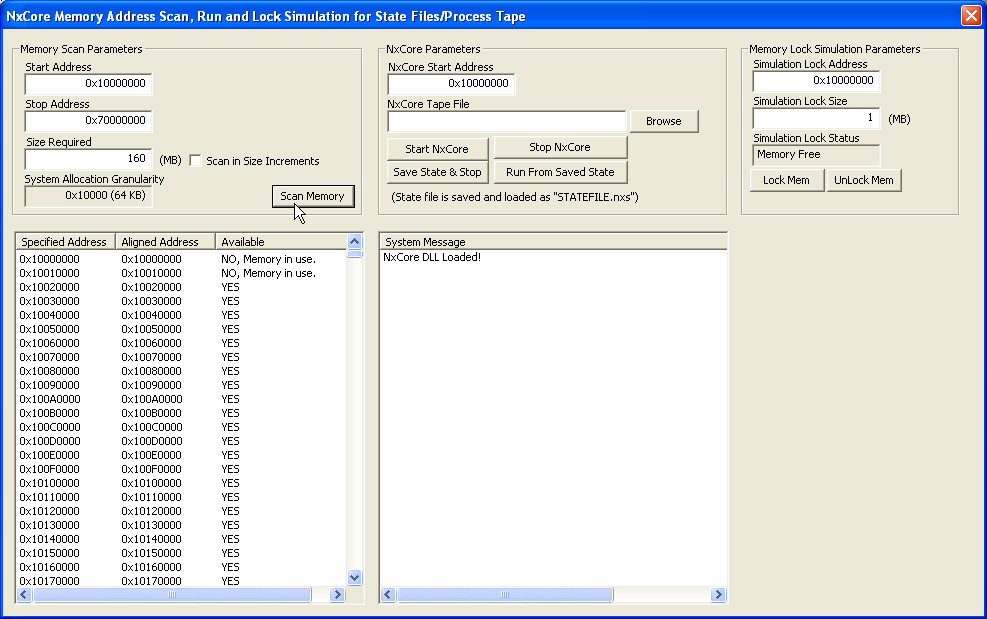 |
3) Lock 1 mb at address 0x10020000 (specified in the memory lock simulation
parameters):
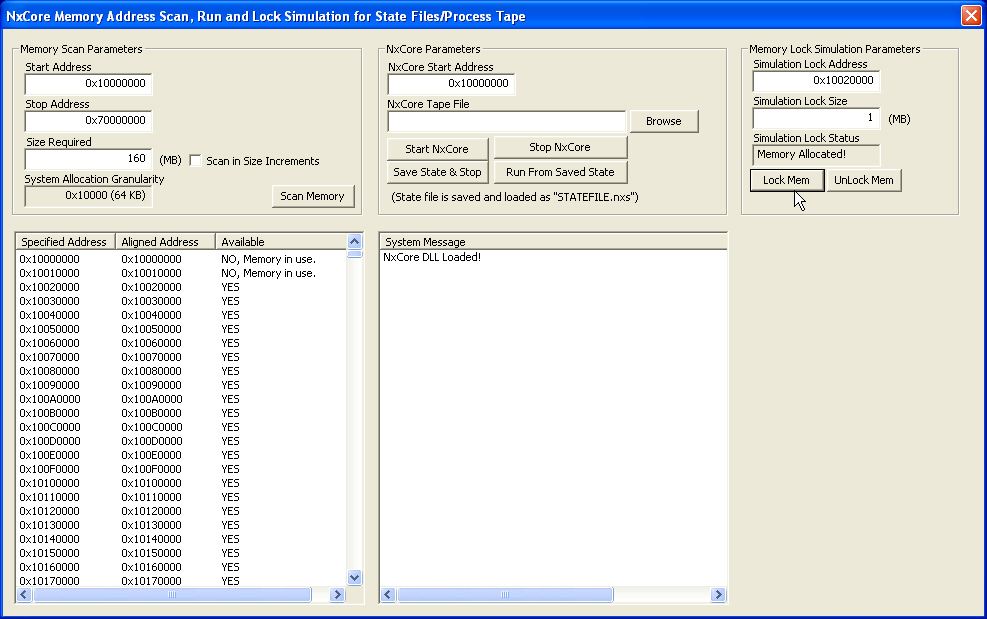 |
4) Re-scan memory to show address 0x10020000 is now occupied from the
previous simulation memory lock:
 |
5) Start an NxCore tape, allow NxCore to choose the address (by specifying
0 in the NxCore Start Address). The tape starts successfully:
 |
6) Start an NxCore tape, specify the address to start at as 0x10020000, the
address we have previously locked. NxCore fails to start, returning an error
code -5:
 |
7) Start an NxCore tape, specify the address to start at as 0x10130000,
which is available. NxCore starts successfully:
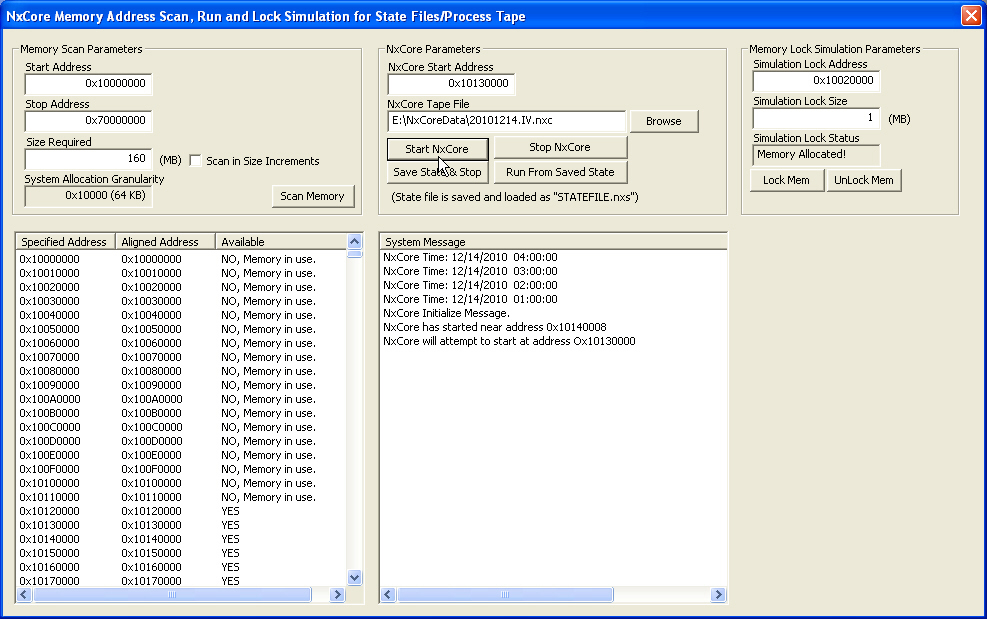 |
8) Scanning memory again while NxCore is running, we can see that indeed
NxCore has started in and consumed location 0x10130000:
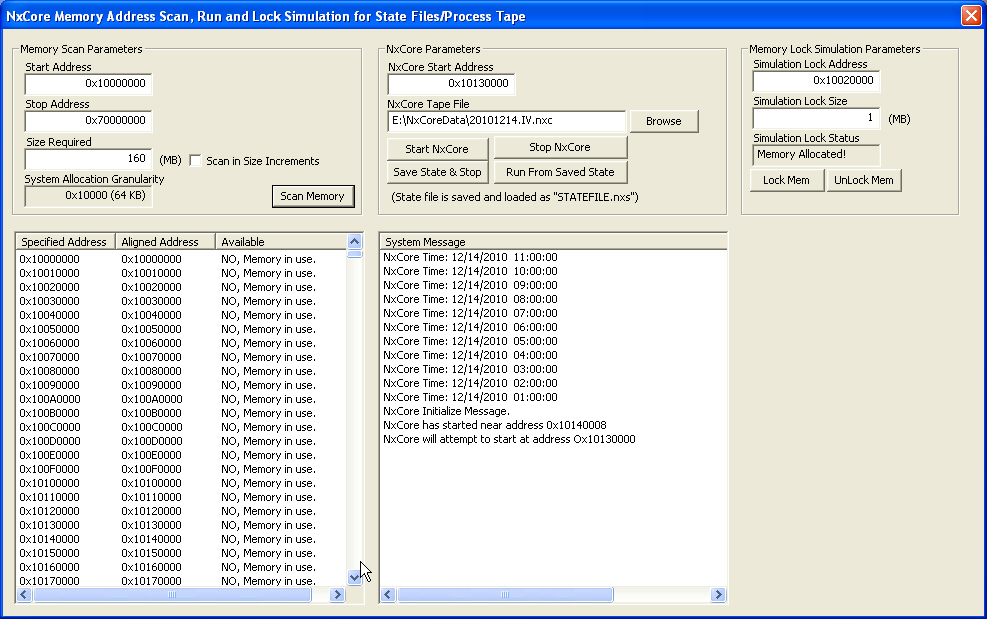 |
9) Save a state file and stop NxCore:
 |
10) Rescan memory to see that indeed NxCore has unloaded and location
0x10130000 is again available after the unload:
 |
11) Run from the previously loaded state file. As location 0x10130000 is
available, the state file loads and runs successfully:
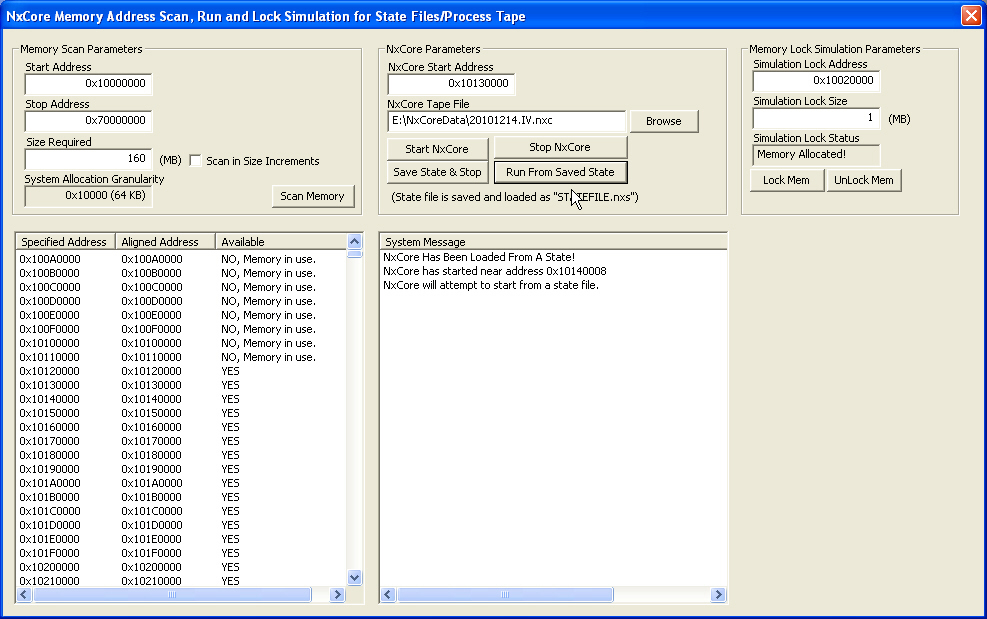 |
12) Re scanning memory we can see that the state file has indeed loaded and
consumed address 0x10130000:
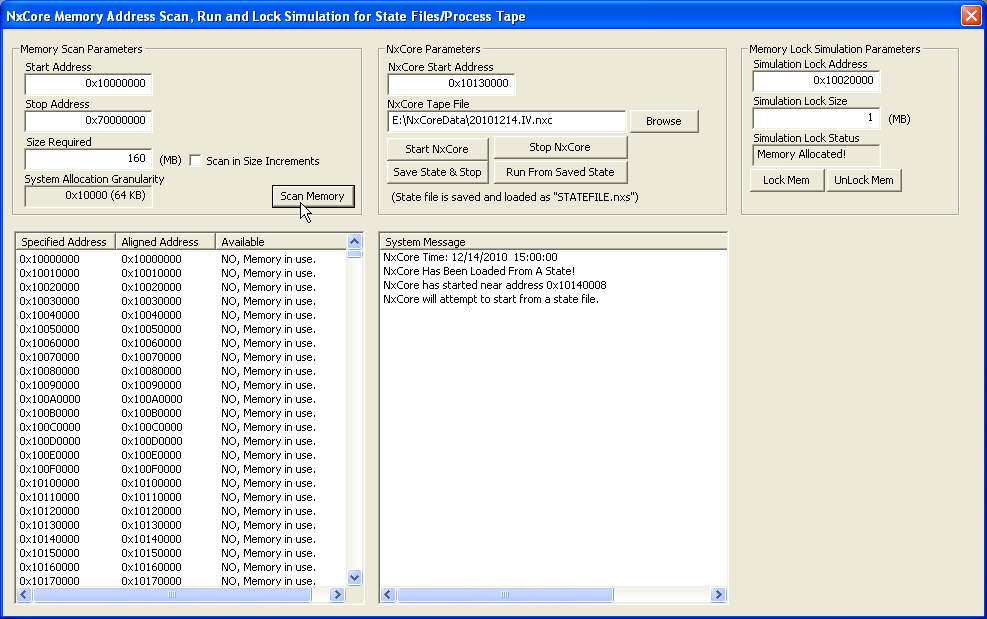 |
13) Next we restart, this time locking address 0x10130000 using the memory
lock simulation parameters. Scanning memory we can see the location is indeed
used:
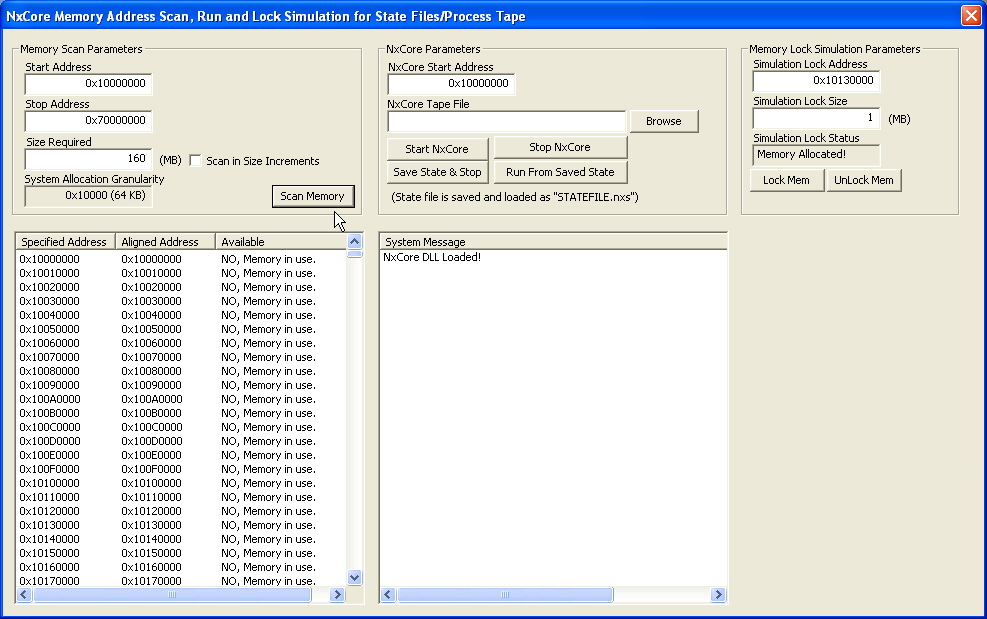 |
14) We then try to load the same state file, but as location 0x10130000 is
now used by another process, the load of the state file fails, returning
-5:
 |
15) Finally we free the simulation lock memory, rescan to see that indeed
address 0x10130000 is again available and we load the state file
successfully.
 |
NxCore API Documentation. Copyright Nanex, LLC and Eric Scott Hunsader,
2003-2009 (c). All rights reserved.